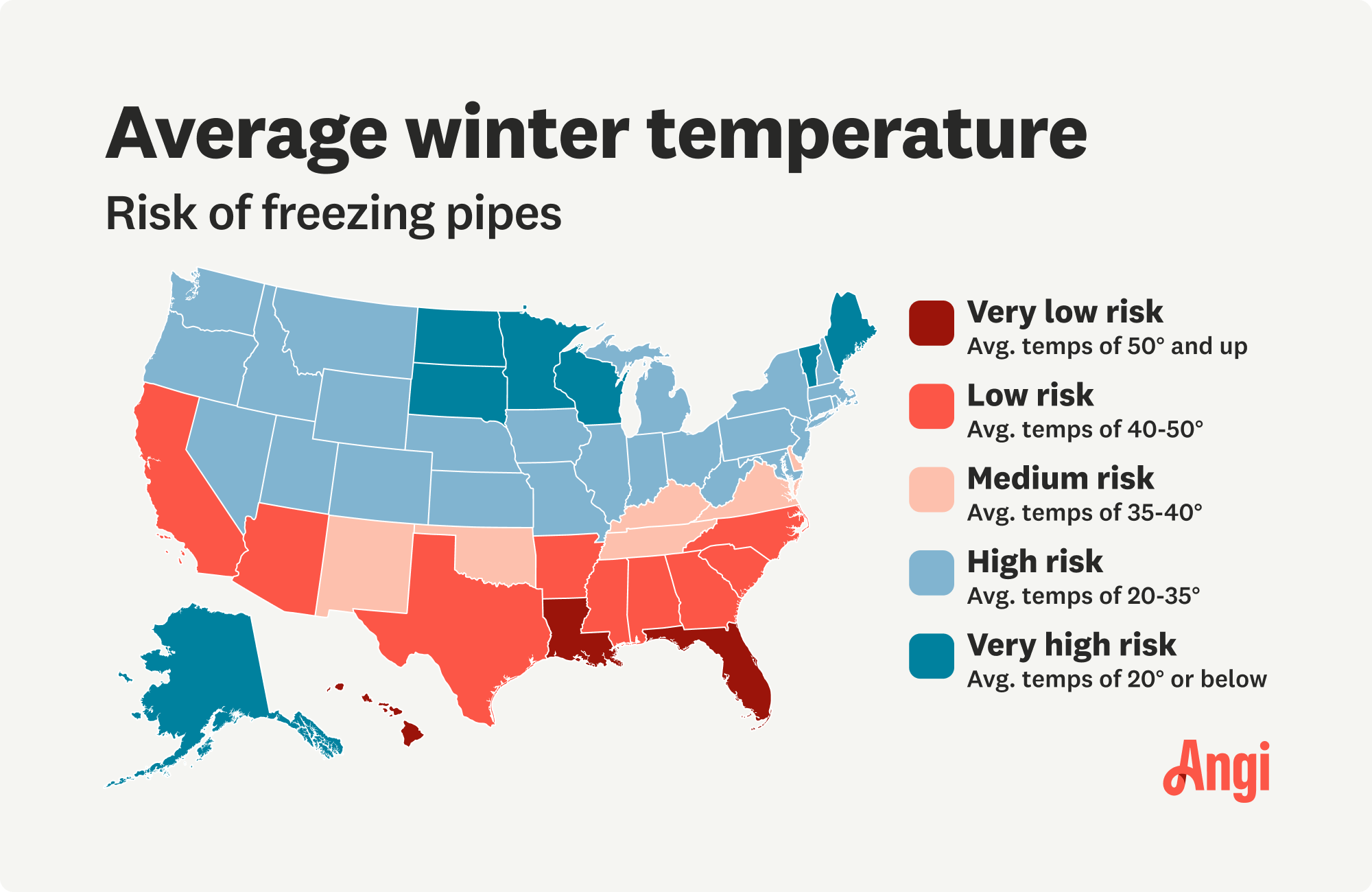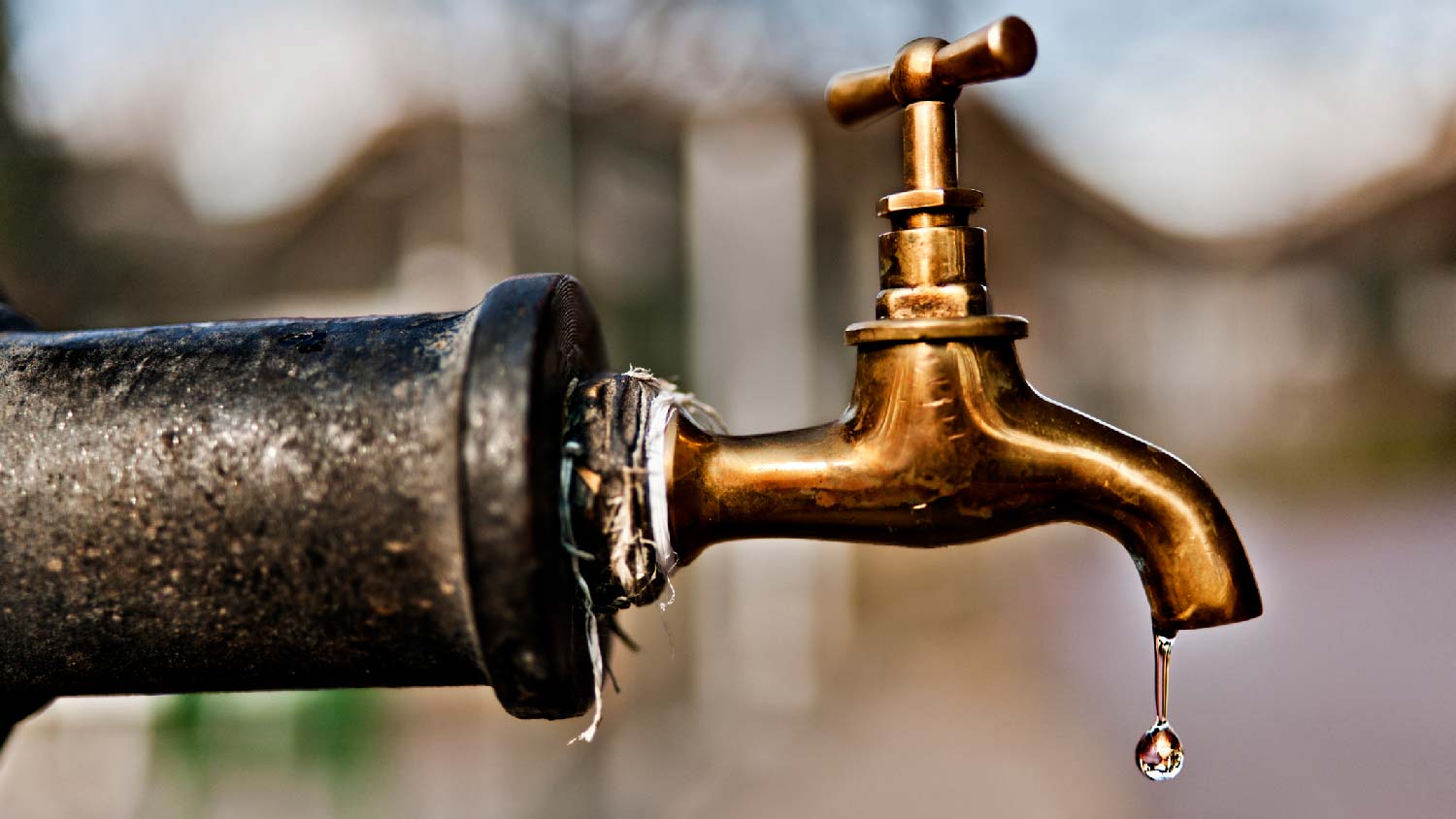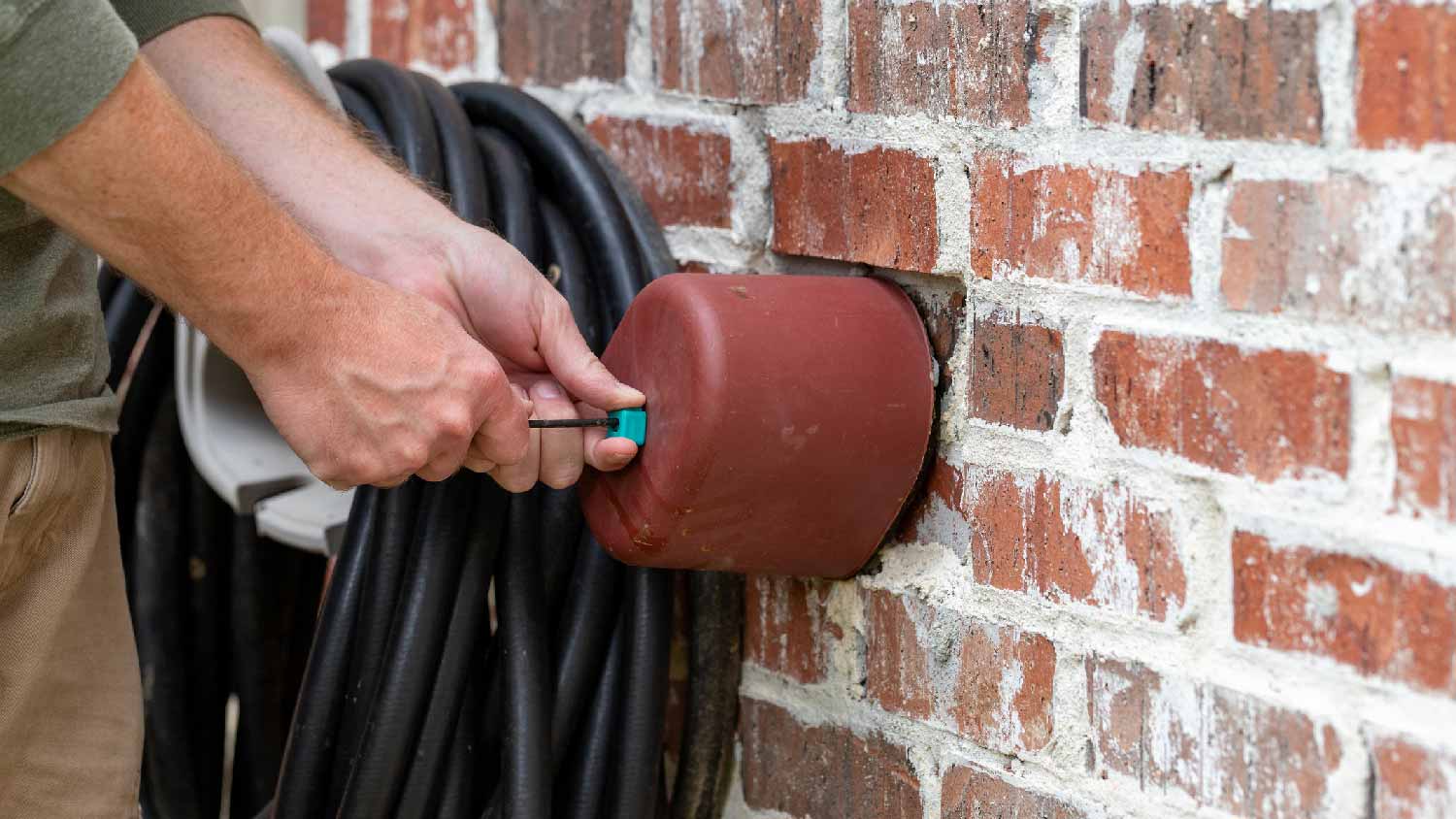
A main water shut-off valve controls water flow for your entire home. Here we break down the cost to replace a main water shut-off valve.
Winterize your home the right way so you can chill out as the weather cools down


Pipes can freeze whenever the temperature is below 32 degrees Fahrenheit.
Insulated pipes are most likely to freeze at 20 degrees or colder.
Drip or cover faucets when it’s 28 degrees or colder for three or more hours.
Winterize your faucets with a cover in prolonged cold weather.
A frozen pipe is a homeowner’s worst nightmare, and your outdoor faucets are among the most vulnerable parts of your plumbing. When temperatures start to dip, you heat the inside of your home, but outdoor faucets (and the pipes connected to them) are left to bear the brunt of the cold weather. This begs the question: Should I drip or cover my outdoor faucets? Most of the time, covering is the way to go—this guide goes over the details.

Before you decide whether to drip or cover your outdoor faucets, you’ll need to know when pipes can freeze. Though pipes can technically freeze when temperatures dip below 32 degrees, most insulated pipes won’t freeze until temperatures dip below 20 degrees for an extended period of time. Uninsulated exterior pipes (like the ones connected to your outdoor faucet) can freeze in less than six hours in cold temperatures.
We just moved into a new house, and when we went to turn our outdoor faucets off for the winter, there were no shut-offs. We were concerned about the pipes freezing, so we called a plumber. They installed new shut-offs, went over exactly how they operated, and made sure that I understood.
As a general rule, take precautions to keep your pipes from freezing when temperatures are 28 degrees or colder for three or more hours. Homes in warmer climates that rarely experience below-freezing weather are more vulnerable to frozen pipes, so err on the side of caution. Homes in northern states are designed to minimize frozen pipes.

There’s one main reason to drip your outdoor faucets: running water is less likely to freeze than stagnant water. This simple act can also help release pressure inside the pipes if they start to freeze. Water expands when it freezes, and if the pressure builds enough, it can damage your pipe.
While a drip may be adequate if the temperature hovers around freezing for a day or dips down for a couple of hours, it doesn’t work well in prolonged, extreme cold. The drip can start to freeze in the pipe or on the ground, damaging your pipes and creating a slip hazard. Dripping a pipe can also waste water and increase your water bill.

If you live in a climate with freezing temperatures, you’ll want to cover your outdoor faucets in the winter rather than dripping them. Even with a vigorous drip, frigid temperatures can travel through your faucet and freeze the connecting pipes.
Before using a cover, you’ll need to properly winterize your faucet. If the forecast shows temperatures below 28 degrees for more than three hours:
Turn off the water to the faucet using the water supply shut-off valve.
Detach any hoses.
Run the water until the faucet completely drains.
Install the cover.
Use an insulating outdoor faucet cover, like an insulated bag or box. In colder climates, you can stuff the cover with additional insulation.
Pipes located on exterior walls or near the outside of your home (like those connected to your outdoor faucets) are the most vulnerable—especially if they’re uninsulated or made of metal. Here are some additional ways to winterize these faucets.
Install a frost-free faucet: A frost-free faucet is a first line of defense against cold weather. Though you should still use a cover, this type of faucet doesn’t hold standing water that can freeze inside the spout.
Insulate your outdoor pipes: It’s good practice to insulate outdoor faucets, exposed piping, piping on exterior walls, and piping in colder or unheated areas of the home. Insulation can raise the water temperature by 3 to 4 degrees.
Shut off the water: Even if you don’t cover your faucet, winterize it by turning off the water at the shut-off valve and draining it.
Raise the thermostat: Set your thermostat to a minimum of 55 degrees, even if you aren’t home. While this won’t help your outdoor faucet, it can help prevent the interior pipes connected to your outdoor faucet from freezing.
If you aren’t sure how to effectively winterize your home or notice the signs of a frozen pipe, it’s a good idea to call a plumber near you. Preventative measures tend to cost much less than repairing the damage from a burst pipe.
From average costs to expert advice, get all the answers you need to get your job done.

A main water shut-off valve controls water flow for your entire home. Here we break down the cost to replace a main water shut-off valve.

Everyone can relate to having toilet issues—we’ve all been there. There are several reasons why your toilet might need repairs, and the cost varies based on the damage.

The cost to add plumbing to a detached garage depends on several factors, including the type of plumbing and the garage's distance from your home.

Find out the average water pressure regulator replacement cost, key price factors, and tips to save on your project. Get transparent, expert-backed cost info.

Follow this guide to learn how to install a kitchen sink drain, from shutting off the water supply to lowering the drain outlet and connecting the P-trap.

Replacing or upgrading plumbing in your home? Make sure you know how to measure pipe size accurately to avoid buying the wrong materials.